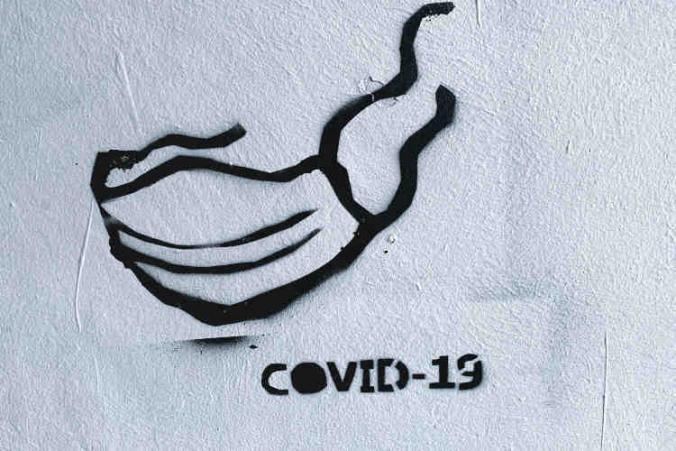COVID-19 brings up several new issues in the workers compensation settings. With the COVID-19 pandemic, there are many discussions and questions around how to stay safe at work. Clearly, we all want to prevent work injury, work illnesses and occupational diseases. Some debates are about the pros and cons of wearing a mask and other Personal Protective Equipment (PPE) at work. Many people want to understand the requirements concerning the use of a mask at work. There are several opinions on this subject, so I decided to do some research to better. My goal is to understand the use of face masks in the workplace environment. Luckily, there are helpful resources available.
OSHA guidelines – Masks vs respirators
The Occupational Safety Health Administration (OSHA) published guidelines and obligations regarding respirator and face coverings at work. OSHA’s standard is contained in 29 C.F.R. 1910.134. Unfortunately, this Federal Regulation is long, detailed, and not terribly easy to follow. Furthermore, it was originally enacted in 2006 and was last updated in 2011. It contains information about types of face masks, respirators, and the requirements for their use. However, when they wrote the standard, they didn’t specifically address the complications of a pandemic involving a novel respiratory virus.
Many discussions throughout the COVID19 pandemic focus on N95 masks in particular. OSHA also classifies these masks as respirators, not masks. Moreover, OSHA considers devices more substantial than a N95 mask such as half-face or full-face pieces with filters, as respirators. Under OSHA regulations, the use of any of these kinds of respirators in the work environment triggers some requirements. However, more simple masks such as paper or cloth masks (including dental or non-N95 surgical masks) are not respirators. Therefore, these simple masks don’t trigger any requirements under the standard 1910.134.
Identifying workplace exposure to COVID-19 virus
Every workplace uses protective masks differently. The main common factors are the type of work environment and potential exposure to the COVID-19 virus. With that in mind, OSHA classifies workplaces into four categories: Lower, medium, high, and very high exposure risk. Lower exposure risk jobs are those that don’t require contact with people that might have the COVID 19 virus. This category also includes jobs that don’t require frequent and close contact with the public. In contrast, medium exposure risk jobs require frequent or close contact with people. These people may be infected but they are not COVID19 patients. Examples of medium risk exposure jobs include schools, high population density work environments, and some high-volume retail settings.
High exposure risk jobs are those with high likelihood of exposure to sources of COVID-19. Examples for jobs in this risk-category include healthcare delivery and support staff, medical transport, and mortuary work. Finally, very high exposure risk jobs are those with a high potential for exposure to known or suspected COVID19 sources. These require specific medical, postmortem, and laboratory procedures. Examples of very high-risk exposure include healthcare workers treating COVID 19 patients. Other examples are healthcare or lab personnel that collect or handle specimens for treating potential and actual COVID-19 patients. And last, morgue workers performing autopsies on individuals that had (or might have had) COVID-19 at their time of death.
Use personal protective equipment (PPE) to prevent work injury or occupational disease
I reviewed the OSHA guidance on preparing workplaces for COVID-19. According to that publication, additional personal protective equipment (PPE) is not recommended by OSHA for workers in lower exposure risk jobs. PPE may include things such as gloves, goggles, face shields, face masks, and respiratory protection when appropriate. If a worker would typically wear PPE for their job, they should continue using the PPE in this time. Here, OSHA does not recommend using other PPE gear.
For medium exposure risk jobs, OSHA recommends using PPE ensembles such as masks, gloves, gowns, or face shields. Similarly, workers in high or very high exposure risk jobs will need to wear PPE. For these jobs, OSHA suggests wearing gloves, gowns, and face shields or goggles. Depending on the job, the tasks and the exposure, the worker should wear a face mask or a respirator. However, any employers requiring PPE must provide the equipment to their employees. Furthermore, employees and employer must also follow all relevant state and federal requirements as they pertain to the equipment. Finally, employers must also provide training for appropriate use and disposal of PPE.
Personal thoughts and final remarks
As time evolves, I suspect we will develop a better understanding of this virus. From there, we will be able to determine the effectiveness of face masks and respirators in reducing transmission of COVID-19. However, as we all begin to embark on the process of “reopening”, we need to be mindful of our surroundings. It’s always a good idea for workers to identify their risk exposure classification. That way, they can identify the protective equipment they might need to wear at work to prevent work illnesses and diseases. Employers must also begin the difficult task of how to safely reopen workplaces. To that end, the OSHA Guidance on Preparing Workplaces for COVID 19 has a lot of great information for employers.

Leave a Reply